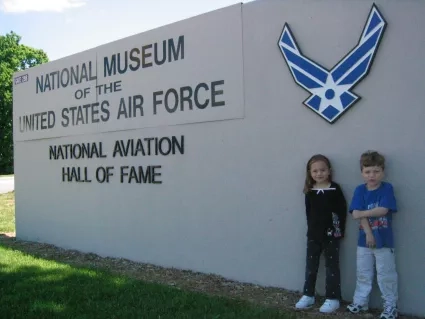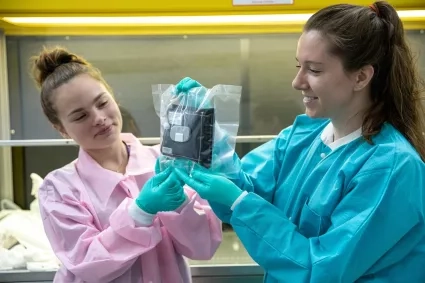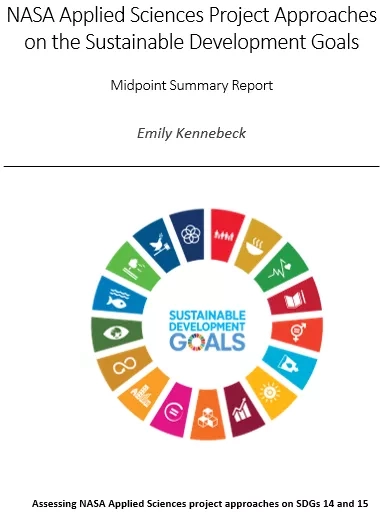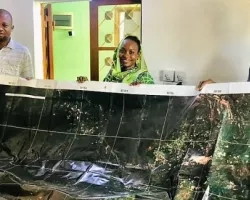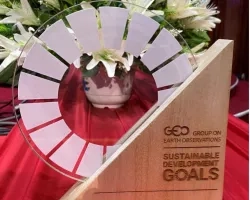How Intern Emily Kennebeck Supports NASA Efforts to Broaden Earth Observation Uses for UN Sustainable Development Goals
What sparked your imagination when you were a child? For Emily Kennebeck, an intern supporting NASA Earth Applied Sciences and the Group on Earth Observations ‘Earth Observations for Sustainable Development Goals’ (EO4SDG), it was outer space. From stargazing to visiting the space exhibit at the National Museum of the US Air Force, Kennebeck, a senior at Purdue University, has always been captivated by the cosmos. But it’s not just the wide expanse of space that inspired Kennebeck. She also has a deep love for all things green — especially plants.
Kennebeck combined her two passions, space and plants, through her studies at Purdue, where she is earning her bachelor’s degree in horticulture with a concentration in plant science. During her studies she met Cary Mitchell, a professor of horticulture at Purdue who introduced Kennebeck to environmental agriculture and astrobotany, and Gioia Massa, a project scientist at the Plant Processing Area at NASA’s Kennedy Space Center in Florida. The Plant Processing Area is the part of the Space Station Processing Facility (SSPF) that houses plant research and helps develop systems that aid space crop production like the Vegetable Production System, known as Veggie, and the Advanced Plant Habitat (APH).
During her junior year, Kennebeck interned in the Plant Processing Area, preparing Veggie hardware and conducting research for new crop selection for spaceflight. She started her current internship, which is part of the Applied Sciences Program efforts to help countries meet the SDGs and their derived benefits using Earth observations, in June 2020.
Here’s Kennebeck in her own words:
Meet Emily Kennebeck
This summer and fall [2020], I had the opportunity to have Argyro Kavvada, program manager for Sustainable Development Goals for the Applied Sciences Program, as a mentor while working with nine projects that support the use and integration of Earth observations or models in countries’ activities to meet SDGs in the context of climate variability and change. The Global Goals were developed to promote a more sustainable environment in which all species can live, and in which all humans can live with equal footing across gender, class, race, faith and other important factors. The UN member states have agreed to strive to meet these goals by 2030. The projects I worked with this summer and fall focus on SDGs 14 (Life Below Water) and 15 (Life on Land).
In order to learn more about each team, I sent out a questionnaire to each project investigator (PI) to learn about specific challenges and milestones as well as engagement practices that worked well between them and their project stakeholders. I conducted follow-up interviews to garner additional insights related to their project activities. Using the information I gathered, I wrote a summary report so PIs, the Applied Sciences Program and, eventually, a larger audience, can see how each project is doing and any challenges or recommendations there might be.
One project focused on developing a solid network for sustainably sited aquaculture farms in Palau, a small island developing state. Another project looked at tracking forest degradation due to illegal mining in Ghana. Each project used Earth observations, which provided real-time data, to help further the project team’s research and allow their partner countries to make informed, sustainable decisions when policymaking.
The most exciting part of this process for me was getting to learn about the projects that are driving toward a more sustainable future for us all. Sustainability has always been a passion of mine. To me, it’s the mentality that we all should have in order to preserve the planet as it is now. In my own life, I’ve started to cut out plastic because it’s a material that can be especially detrimental to our environment and human health.
The central focus of the Applied Sciences projects I investigated is to support the use and integration of Earth observations or models in country activities and UN processes to meet related SDG target(s) and report on relevant indicators, and for their country partners to implement project data into environmentally friendly policy. These kinds of legislation changes can help find solutions to maintain a healthy, viable planet for future generations.
This fall semester I completed a summary report in collaboration with the associate project managers of each project. I’m also developing individual small posts for each project so their stories can reach a wider audience through the EO4SDG website. My goal is to amplify awareness of these projects and help others start thinking about ways to integrate Earth observations to support and implement sustainable practices.
In November, I completed a NASA ARSET training on how to use Google Earth Engine, a platform that many of the projects that I have worked with use, to develop informative and interactive maps for easier comprehension of EO data. This training allowed me to see how important it is that data be processed so its value can be easily understood by end users. I have also had the opportunity to attend conferences like the United Nations World Data Forum, the International Astronautical Congress and the GEO Week 2020, which have helped me learn how EO data is used in other projects and organizations worldwide, and how the SDGs are viewed as an organizing framework for tracking and driving progress toward sustainability. It’s been very exciting for me to see so many individuals come together and work to make these Global Goals a reality.
Moving forward, I’m looking at graduate school as my next venture. I want to study controlled environment agriculture (CEA) and am currently looking at programs across the globe. I hope to enter the CEA field and combine it with astrobotany for future research that will hopefully grant me access to my dream job — working with plants in outer space!

